15. Shyrdak

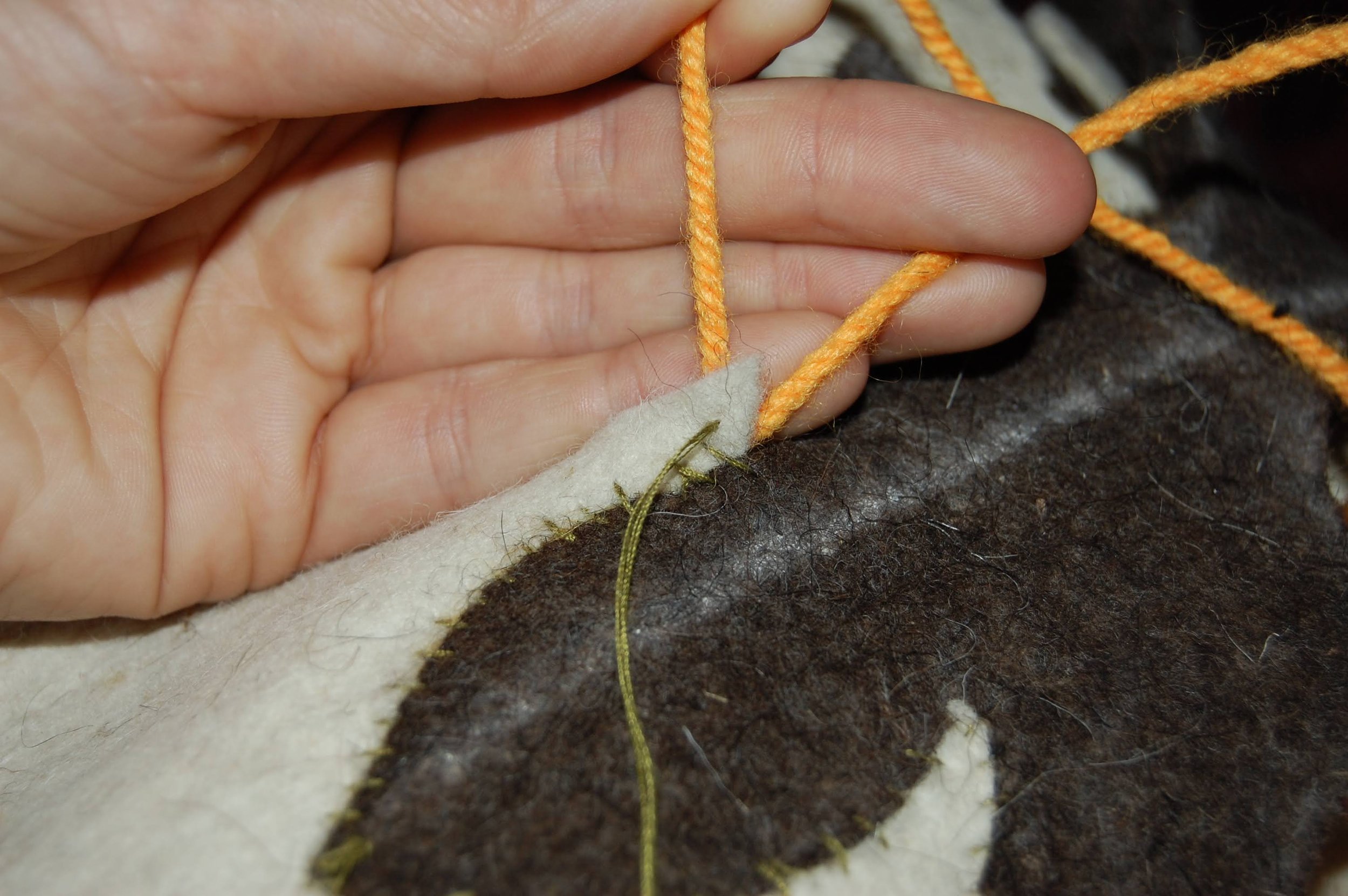
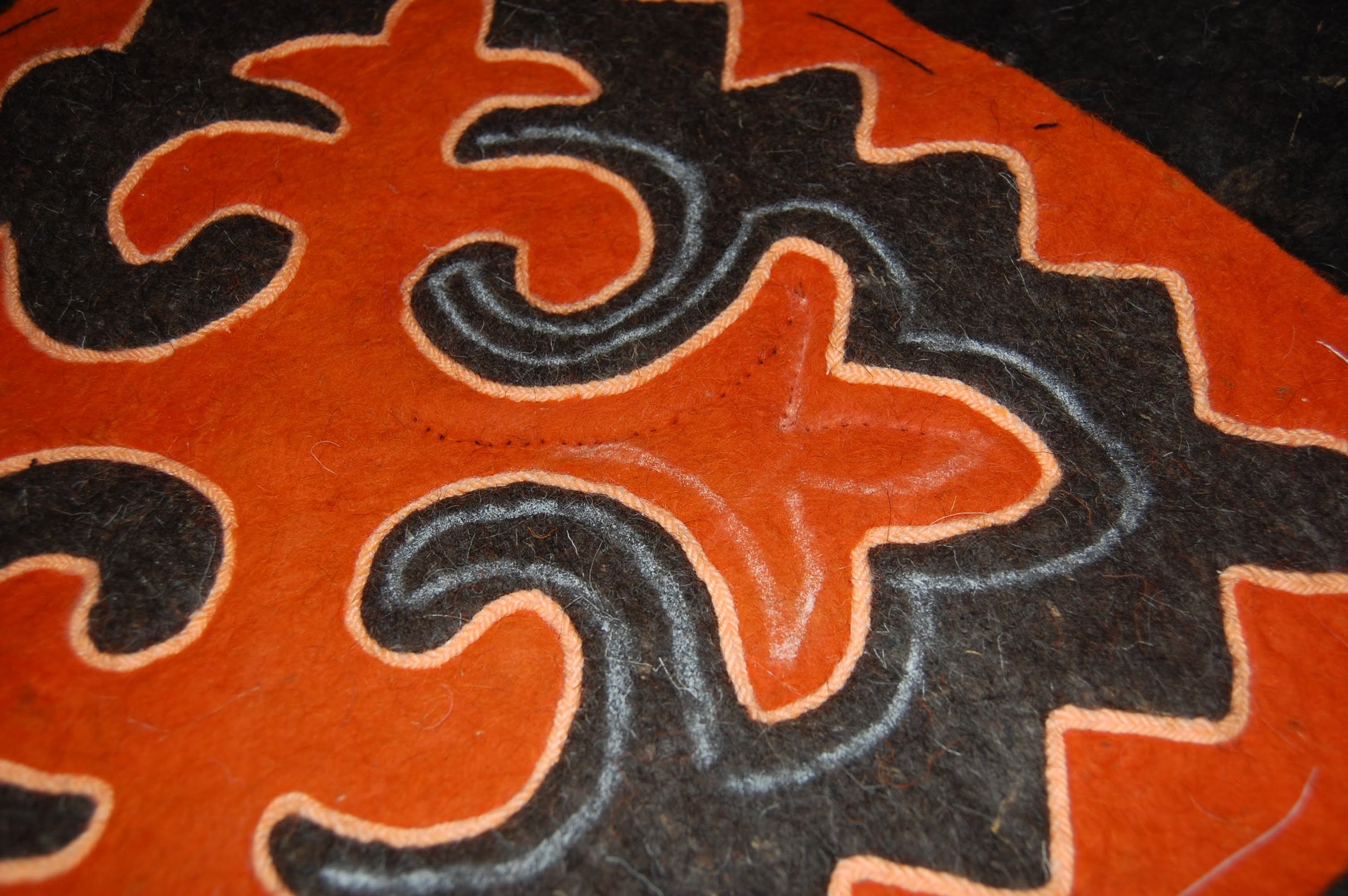
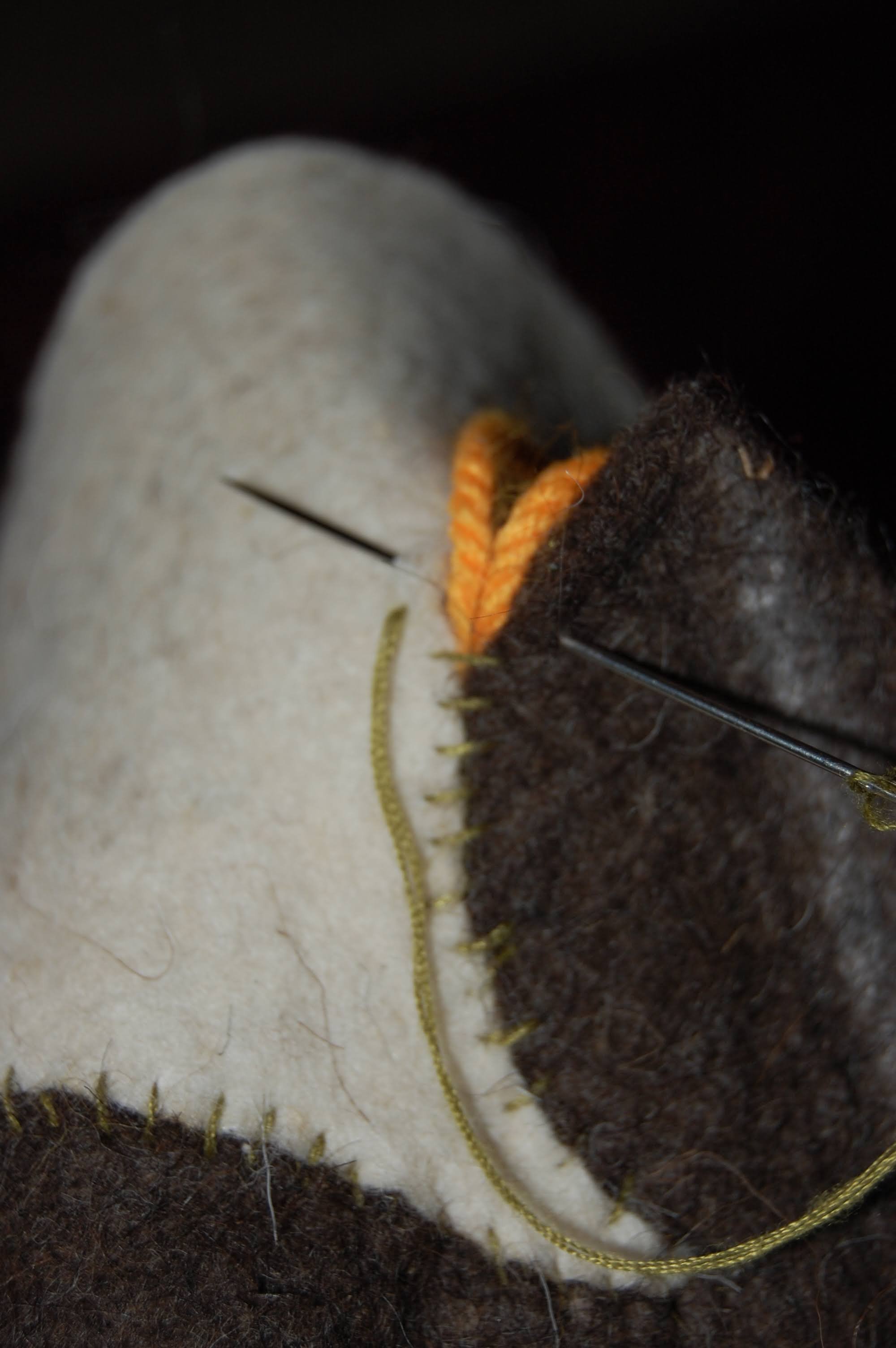
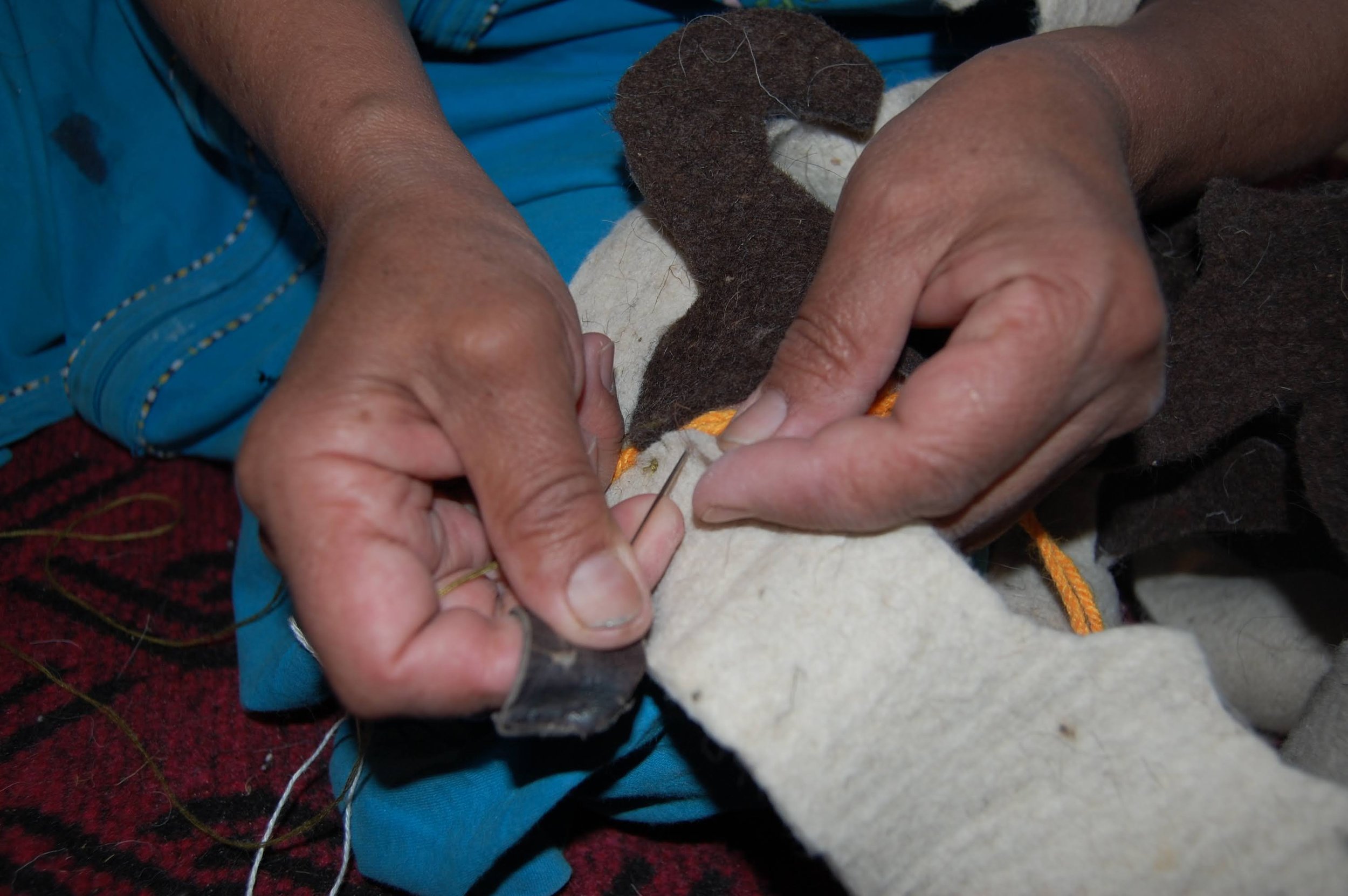

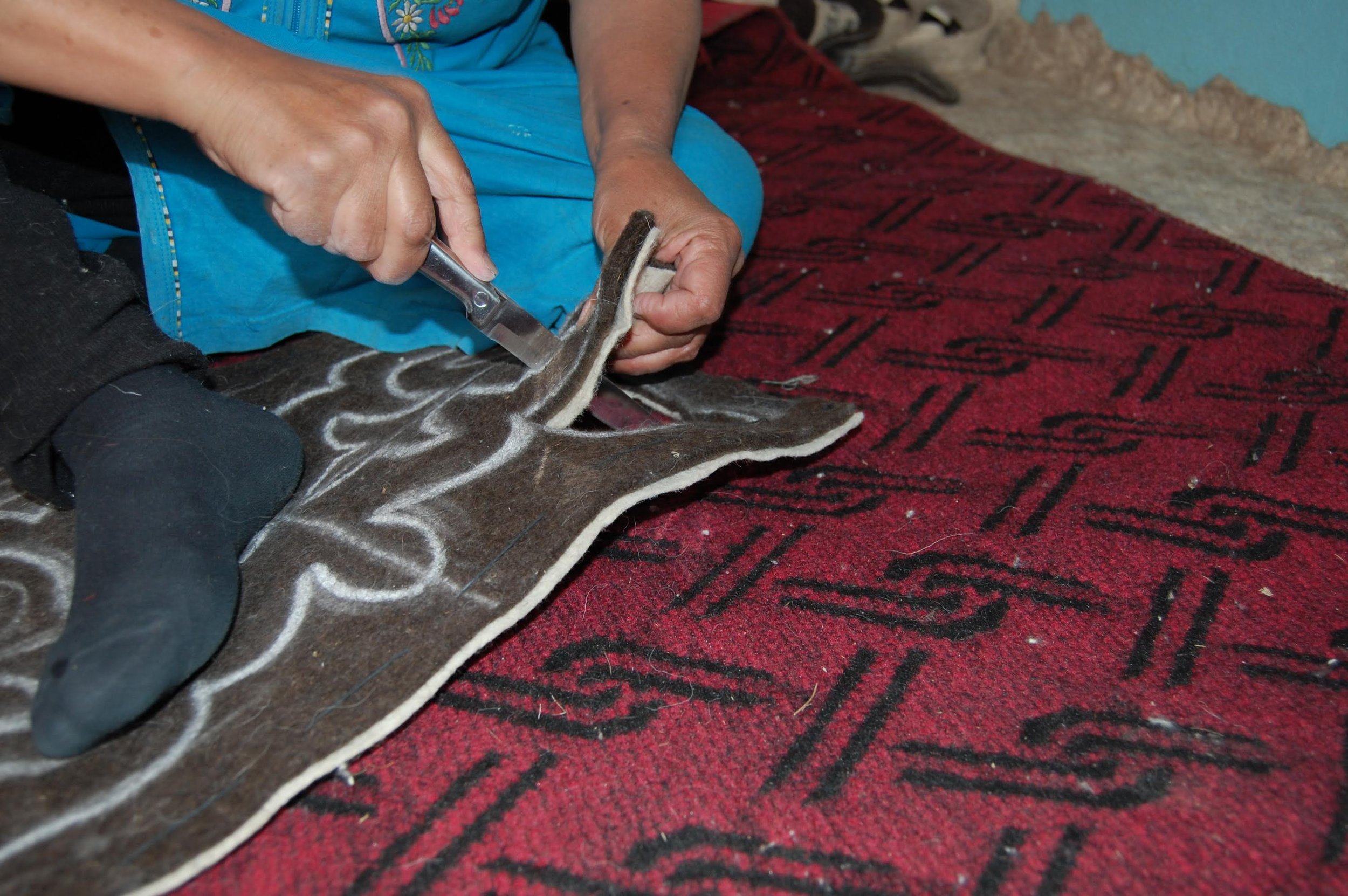
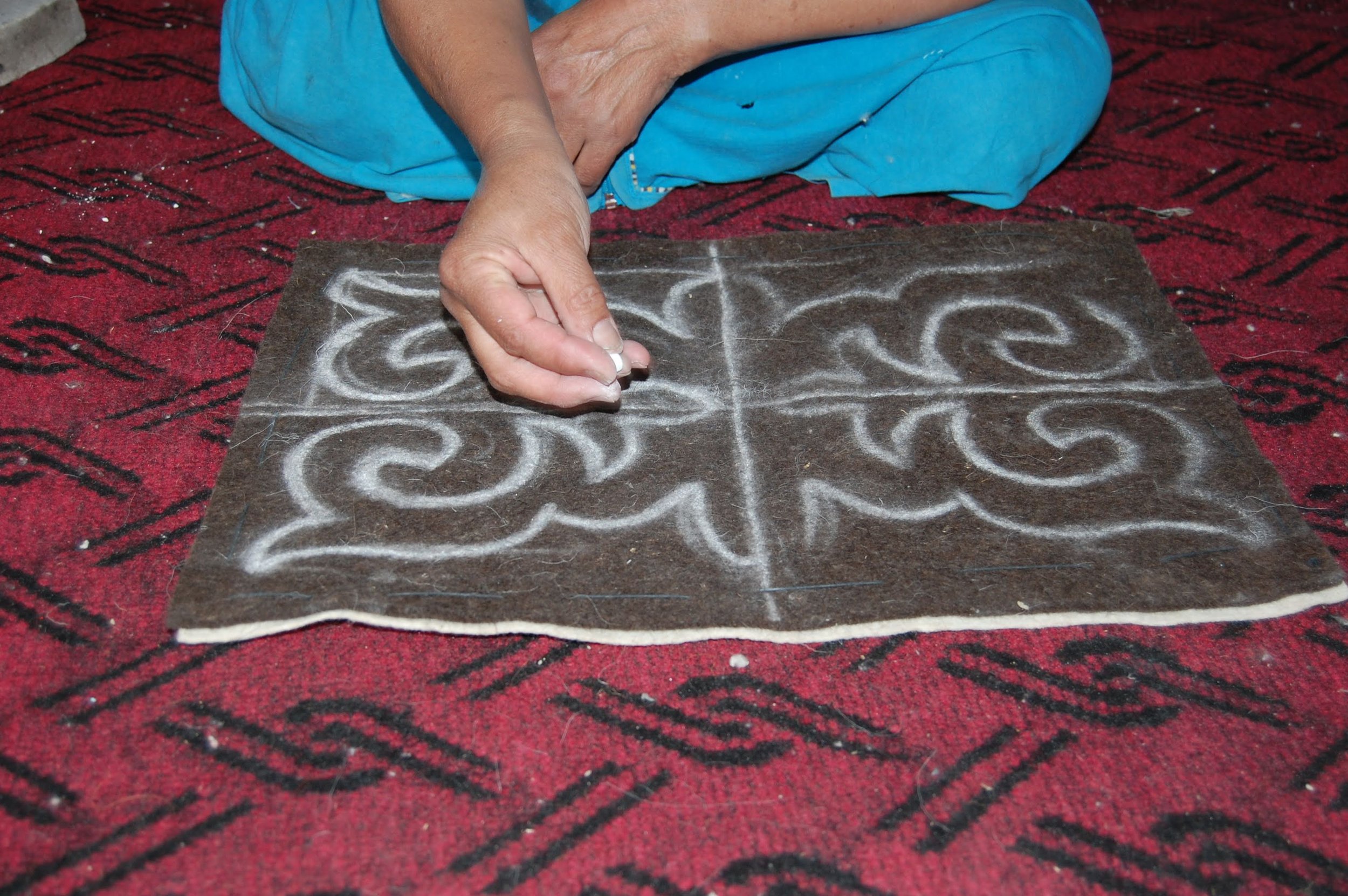
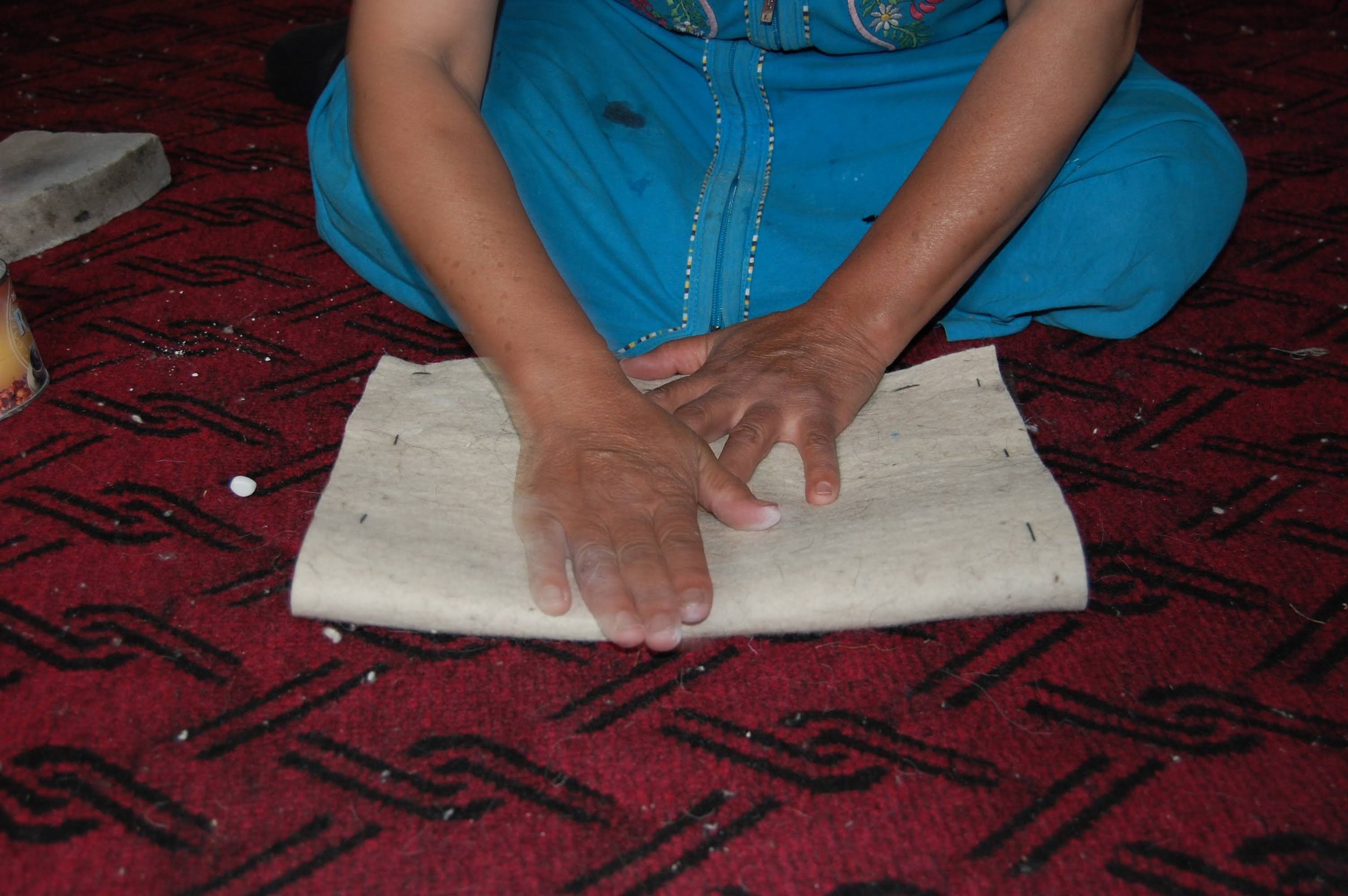
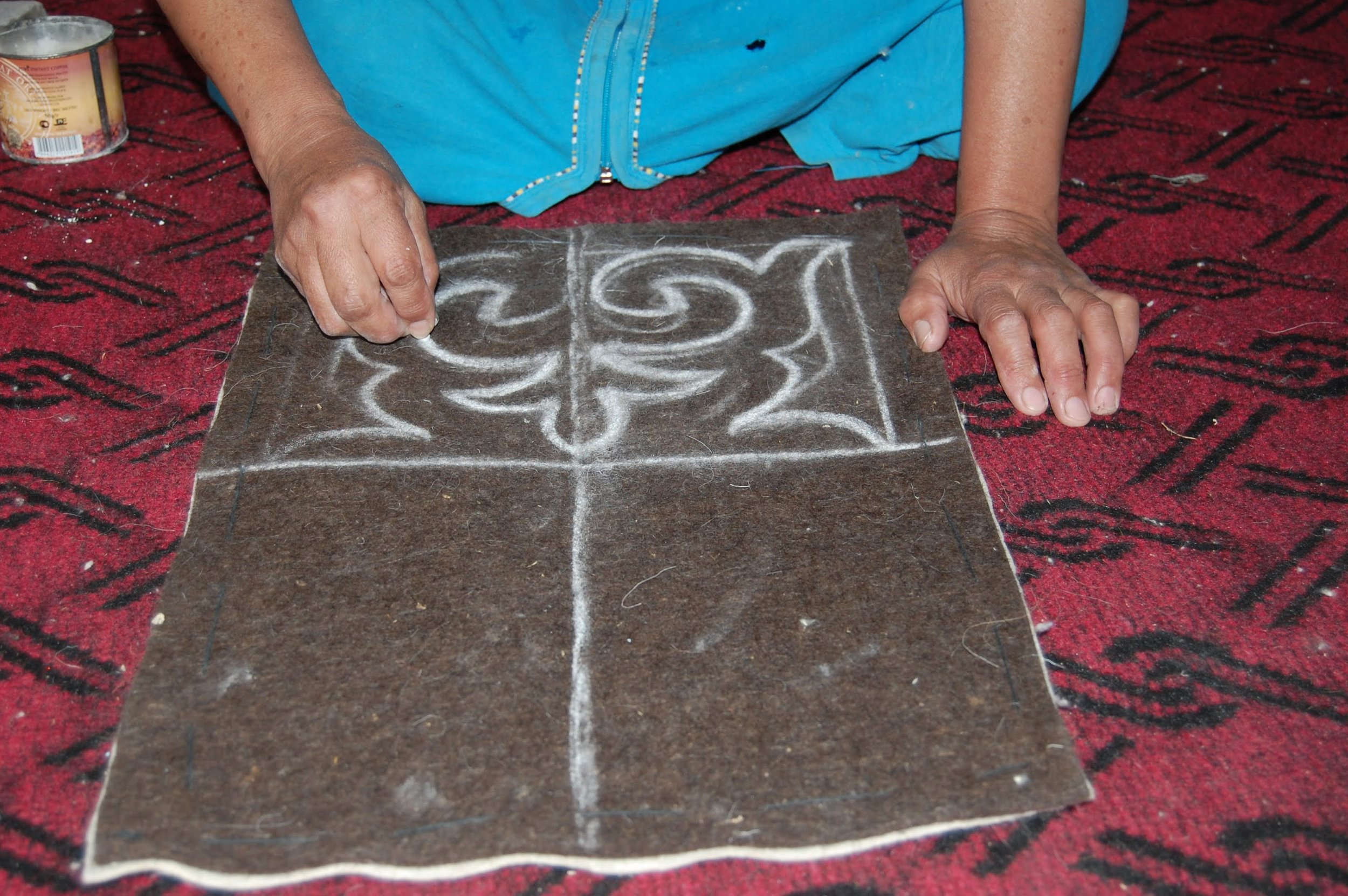
After lunch the women showed me how to make shyrdak (felted and hand-stitched wool carpets). To produce the felt for shyrdaks a fine-fleeced wool is preferred and coarse hair is removed. The felt is produced according to the same techniques as making ala kijiz. Two contrasting colors of felt were laid on top of each other and loosely stitched together. The square was divided into quarters and a chalk drawing is drawn on the upper top piece. It is then folded over to imprint the design on the rest of the square.
A knife is used to cut through both pieces of felt. Before the patterns are separated the positive and negative designs are sewn together at a few points to hold their position. The stitching is done from behind using the glovers stitch (a process when cut patterns are sown together with “jeek” edging yarn). For glover’s stitching brighter coloured yarn is selected. Felt edges are ironed and trimmed after getting stitched. Stitched felt patterns are faced with dark felt on the background. The final stitching of the shyrdak is the most time consuming part, but adds strength and a quilted look.
Colour combinations such as red and blue, brown and white, orange and brown, red and white, and red and green are very common and have symbolic meanings. For example, red and white together are said to promote fertility and red and blue together represent the waters of Lake Issyk-kul. Most of the shyrdaks use chemical dyes, however some natural dyes are used such as birch leaves, currant berries, walnut shells, and clover. Some shyrdak’s consist of just raw grey, black, brown and white wool, or combine raw wool with dyed wool.
